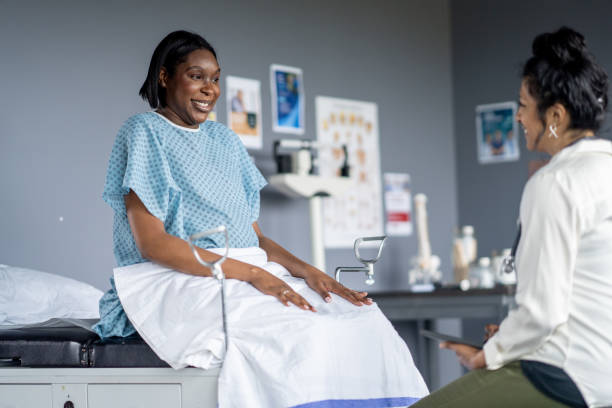Sistas, Make Your Pap Smear Less Uncomfortable With These 10 Tips

Pap smears are an integral part of reproductive health for women. It’s the only way to catch issues with your cervix before they get out of control. Generally, doctors say the procedure should only come with some discomfort, but many women tell a different story. They describe pap smears as being highly uncomfortable and even painful. Fortunately, there are things you can do to help.
10 Ways to Make Pap Smears Less Uncomfortable
1. Empty Your Bladder
A full bladder might make the examination more uncomfortable. If you need to give a urine sample, then ask if you can give it at that point.
2. Ask For a Smaller Speculum
Speculums come in different sizes so you may be more comfortable with one that is smaller or narrower than the one you’ve experienced before.
3. Talk to Your Doctor
You should let your doctor know if you’ve never had sex or inserted anything into your vagina as this can influence how they proceed. The same is true if you have any trauma associated with penetration.
4. Talk About Your Medical History
If you have a tipped uterus or vaginismus, you should let your doctor know. Having a tipped uterus may call for a different position and a longer speculum. People with vaginismus often prefer to insert the speculum themselves.
5. Breathe
Doctors always say “Try to relax” because it can help to make the procedure less painful. It’s a good idea to take slow, rhythmic breaths while the doctor does their work.
6. Ask About a Plastic Speculum
Some people find plastic speculums to be more tolerable than metallic ones so ask your doctor if they have any.
7. Ask to Change Positions
While doctors usually suggest a particular position when performing a pap smear, it doesn’t mean you can’t make slight adjustments so it’s not as uncomfortable. Ask them before you move so they can tell you if it’s affecting their ability to do the test.
8. Take a Painkiller
If pap smears have always been painful for you, it might be a good idea to take a painkiller about 30 minutes before the procedure.
9. Ask For a Warm Speculum
Unsurprisingly, metal speculums can be uncomfortable when they’re cold. You can ask your doctor if you can have a warm one instead.
10. Don’t Depend on a Numbing Spray
Some people get a numbing spray before inserting an IUD but that’s not possible with a pap smear. The spray can obscure the cells that your doctor is collecting so that your results aren’t conclusive.
RELATED: What do Your Pap Smear Test Results Mean?
How Often You Need Pap Smears
Doctors recommend that you start getting a pap smear at the age of 21 whether or not you’re sexually active. That’s because sexual activity isn’t the only factor that contributes to cervical cancer. Before 30, you should get a pap smear every three years. Between the ages of 30 and 65, you should have them every five years in conjunction with an HPV test. Once you’re over 65, your doctor may advise that you stop having pap smears once you’ve had three normal results in a row.
Additionally, if you’ve had a total hysterectomy to remove your uterus and cervix, you may no longer need to do pap smears.
Of course, this schedule can change if you get an abnormal result, have a significant history of cervical cancer in your family, or have dealt with other types of cancer in the past.
RELATED: What To Expect During Your Pap Smear
What Happens if the Results are Abnormal
If your pap smear results are abnormal, it usually means that the shape and size of the cervical cells suggest that they’re precancerous. These cells can either be classified as low grade or high grade depending on how close they are to becoming cancerous. The next step after getting abnormal results is to get a colposcopy, in which a doctor will collect samples of your cervical tissue for testing.
These tests will then determine the nature of your cell’s abnormalities. Your doctor will recommend treatment options based on the results of your colposcopy. For example, cryotherapy is often used when there are abnormal cells on the cervix’s surface. In that procedure, a doctor or a nurse will use a special liquid to freeze and kill the abnormal cells on the cervix.
Regardless of which treatment method you choose, you’ll likely need to have a follow-up pap smear three to six months after the procedure. If those results are normal, you may have another pap smear in six months and then a year after that.
Though pap smears can be uncomfortable or even painful, they’re essential. Without them, you may develop cervical cancer and not know it. Use some of the tips mentioned here to ensure that you have the best possible experience.
Welcome to Billionaire Club Co LLC, your gateway to a brand-new social media experience! Sign up today and dive into over 10,000 fresh daily articles and videos curated just for your enjoyment. Enjoy the ad free experience, unlimited content interactions, and get that coveted blue check verification—all for just $1 a month!
Account Frozen
Your account is frozen. You can still view content but cannot interact with it.
Please go to your settings to update your account status.
Open Profile Settings